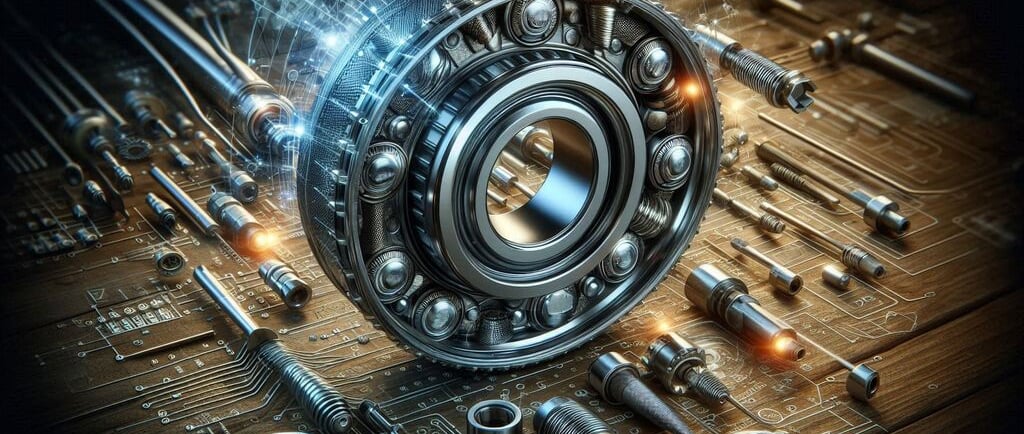Wheel Bearings: Reduce friction between the wheel and axle.
If you've ever wondered how your car runs smoothly with minimal noise and friction, the answer often lies in a small but crucial component:
TIRES AND WHEELS
11/13/20244 min read


Wheel Bearings: How They Reduce Friction and Improve Vehicle Performance
If you've ever wondered how your car runs smoothly with minimal noise and friction, the answer often lies in a small but crucial component: the wheel bearing. These tiny parts play a big role in reducing friction between the wheel and axle, helping your car maintain efficient performance, handle smoothly, and ensure your safety on the road.
In this article, we'll explore how wheel bearings work, why they’re essential, and how to tell when they need attention.
What Are Wheel Bearings?
The Function of Wheel Bearings
Wheel bearings are designed to reduce friction between the rotating wheel and the axle. Essentially, they are a set of steel balls or rollers held together by a metal ring that fits into a raceway on the wheel hub. As the wheel turns, the bearings spin and reduce the resistance between the wheel and axle, allowing your vehicle to move smoothly and efficiently.
In addition to reducing friction, wheel bearings also help support the weight of the vehicle and allow the wheels to rotate freely. This enables the vehicle to move without resistance, ensuring that the engine's power is transferred effectively to the wheels.
Types of Wheel Bearings
There are several types of wheel bearings, depending on the design of the vehicle and the load requirements:
Ball Bearings: Commonly used in most passenger vehicles, these bearings are versatile and provide a balance between load capacity and speed.
Roller Bearings: These bearings are typically used in heavier vehicles due to their higher load-bearing capacity.
Tapered Roller Bearings: Found in both the front and rear wheel hubs of many cars, these bearings are ideal for handling both radial and axial loads.
The Importance of Wheel Bearings in Vehicle Performance
Reducing Friction and Enhancing Efficiency
Friction between the wheel and axle is a major cause of energy loss in vehicles. Wheel bearings minimize this friction, making it easier for your wheels to spin. This not only improves fuel efficiency but also reduces wear and tear on the vehicle’s components, helping your car last longer.
In a world where fuel economy is a significant concern, even a slight reduction in friction can contribute to better mileage. By keeping the wheel moving smoothly with minimal energy loss, wheel bearings play a crucial role in your vehicle's overall performance.
Improving Handling and Safety
When your wheel bearings are in good condition, your car will have smoother handling, especially while turning or during acceleration and deceleration. Poorly functioning bearings can lead to uneven wheel rotation, causing vibrations that negatively affect your driving experience. In the worst case, damaged or worn-out bearings can lead to wheel failure, which can be dangerous, particularly at high speeds.
In addition, wheel bearings affect your car's alignment. Properly maintained bearings help ensure that your wheels stay aligned, reducing the chances of uneven tire wear and handling issues.
Signs of Worn Wheel Bearings
Unusual Noises
One of the first signs that your wheel bearings may be failing is an unusual noise, such as a grinding or humming sound that changes with the speed of the vehicle. If the noise intensifies when turning or steering, it’s a strong indication that the bearings are worn out and need to be replaced.
Vibrations and Handling Issues
If you notice any vibrations in the steering wheel or your vehicle pulls to one side, it could be a sign of damaged wheel bearings. Worn bearings can lead to misalignment and cause the wheels to rotate unevenly, which results in handling problems.
Uneven Tire Wear
When the bearings are in poor condition, they can cause the wheels to be misaligned, leading to uneven tire wear. If you notice your tires wearing down on one side more than the other, it’s worth checking your wheel bearings.
Decreased Performance and Efficiency
Another indication of faulty wheel bearings is reduced fuel efficiency. Since worn bearings create additional friction, your vehicle requires more energy to maintain speed, reducing overall efficiency.
How to Maintain Wheel Bearings for Long-Lasting Performance
Regular Inspections
Regularly checking your vehicle’s wheel bearings can help detect problems before they become serious. A mechanic will check for unusual play in the wheel and listen for any abnormal noises during a routine maintenance check.
Lubrication
Most modern wheel bearings are sealed and don’t require regular maintenance, but older models may require occasional lubrication. Proper lubrication reduces friction and extends the lifespan of the bearings.
Wheel Alignment
Maintaining proper wheel alignment is essential for the longevity of your wheel bearings. Misalignment puts unnecessary stress on the bearings, causing them to wear out prematurely. Regular alignment checks during routine tire rotations or maintenance can help prevent this issue.
Replacing Wheel Bearings: What to Expect
Replacing wheel bearings can be a complex job, particularly if you don’t have the proper tools or knowledge. If you notice any signs of worn-out bearings, it’s crucial to have them inspected by a professional mechanic. If replacement is necessary, expect to pay for both parts and labor.
Depending on the make and model of your vehicle, wheel bearings may cost between $100 and $500 for each wheel, not including labor. Keep in mind that the cost of replacing the bearings will vary based on the severity of the damage and the type of vehicle.
Conclusion: Keep Your Vehicle Running Smoothly with Proper Wheel Bearing Maintenance
Wheel bearings are small but vital components that contribute significantly to your vehicle’s performance, handling, and safety. By reducing friction between the wheel and axle, they help ensure a smoother ride, improve fuel efficiency, and support the overall functionality of your car. Regular maintenance, inspections, and addressing any signs of wear can help you avoid expensive repairs and keep your car in optimal condition.



